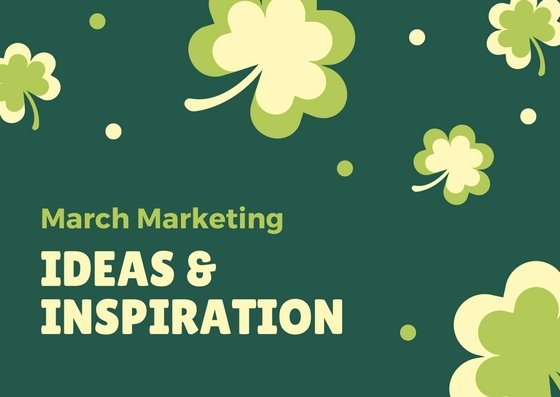In the crowded marketplace of today, standing out requires creativity and innovation. Traditional marketing strategies may no longer be enough to capture the attention of your target audience. To make a lasting impression, it’s essential to think outside the box and incorporate unique, creative items into your marketing campaigns. This article will explore some creative items you can use to enhance your marketing efforts and engage your audience in new and exciting ways.
Understanding Your Market
Before diving into creative marketing strategies, it’s essential to have a deep understanding of your market. Knowing your audience, industry trends, and competitive landscape will help you tailor your campaigns to meet the specific needs and preferences of your target customers.
Here are some key steps to gain a comprehensive understanding of your market:
Conduct Market Research
Market research is the foundation of any successful marketing strategy. It provides insights into customer behaviors, preferences, and trends that can guide your marketing decisions.
Surveys and Questionnaires
Distribute surveys and questionnaires to your existing customers and potential leads. Ask about their preferences, buying behaviors, and feedback on your products or services.
This direct feedback can offer valuable insights into what your customers want and need.
Focus Groups
Organize focus groups with a diverse range of participants from your target market. Engage them in discussions about their experiences, challenges, and opinions related to your industry.
These in-depth conversations can reveal nuanced insights that quantitative data might miss.
Market Analysis Reports
Utilize market analysis reports from reputable sources to understand broader industry trends and forecasts. These reports can provide information on market size, growth rates, and emerging trends, helping you identify opportunities and threats.
Analyze Customer Data
Leverage the data you already have on your customers to gain deeper insights into their behaviors and preferences.
This data can help you tailor your marketing strategies to better meet their needs.
Customer Segmentation
Segment your customer base into different groups based on demographics, buying behaviors, and preferences.
This allows you to create more personalized and targeted marketing campaigns for each segment.
Purchase History
Analyze your customers’ purchase history to identify patterns and trends. Understanding which products or services are most popular can help you focus your marketing efforts on high-demand items.
Website and Social Media Analytics
Use analytics tools to track user behavior on your website and social media platforms. Pay attention to metrics like page views, time spent on site, bounce rates, and social media engagement.
These insights can help you understand what content resonates with your audience and where improvements are needed.
Understand Competitor Strategies
Keeping an eye on your competitors can provide valuable insights into what works and what doesn’t in your industry. Analyzing their strategies can help you identify gaps in the market and opportunities for differentiation.
Competitor Analysis
Conduct a thorough analysis of your competitors’ marketing strategies. Look at their website, social media channels, content marketing efforts, and advertising campaigns.
Identify their strengths and weaknesses, and consider how you can position your brand to stand out.
Benchmarking
Benchmark your performance against your competitors using key metrics such as market share, customer satisfaction, and online engagement.
This can help you understand where you stand in the market and set realistic goals for improvement.
Branded Merchandise
One of the most effective ways to increase brand visibility and engagement is through branded merchandise. These items not only serve as a constant reminder of your brand but also provide value to your customers.
Customized Apparel
Customized apparel, such as t-shirts, hats, and hoodies, can turn your customers into walking advertisements. When designed well, these items can become fashionable and desirable, making people proud to wear them. Ensure the apparel is high-quality and the design reflects your brand’s identity and message.
Eco-Friendly Products
With growing awareness about sustainability, eco-friendly products can resonate well with your audience. Items like reusable shopping bags, stainless steel water bottles, and bamboo utensils not only promote your brand but also align with the values of environmentally conscious consumers.
Tech Gadgets
Tech gadgets are always a hit, especially with a tech-savvy audience. Branded USB drives, wireless chargers, and phone stands can be practical and appreciated gifts. These items are frequently used, ensuring that your brand stays top of mind.
Unique Packaging
Packaging plays a crucial role in the customer experience and can be a powerful marketing tool. Innovative and unique packaging can make your product stand out and create a memorable unboxing experience.
Personalized Packaging
Personalized packaging can make customers feel special and valued. Including the customer’s name, a personalized message, or custom designs that reflect their preferences can enhance their connection with your brand.
Eco-Friendly Packaging
As consumers become more environmentally conscious, eco-friendly packaging can set your brand apart. Use sustainable materials and design your packaging to be reusable or recyclable.
Highlighting your commitment to sustainability can resonate well with your audience and enhance your brand’s image.
Creative Unboxing Experiences
A creative unboxing experience can generate excitement and buzz around your product. Think of ways to make the unboxing process enjoyable and memorable
such as using unique packaging designs, including surprise gifts, or incorporating interactive elements.
Personalized Customer Gifts
Sending personalized gifts to your customers can create a strong emotional connection and foster loyalty. These gifts should be thoughtful and relevant to your customers’ interests and needs.
Here are some expanded strategies to make your personalized customer gifts more effective and impactful.
Customized Gift Boxes
Creating customized gift boxes tailored to your customers’ preferences can leave a lasting impression. Think about what will delight your customers and align with your brand.
Tailoring to Customer Preferences
Understand your customers’ preferences through surveys, purchase history, or social media interactions. Use this data to curate gift boxes that match their tastes.
For example, a wellness brand might include items like essential oils, herbal teas, and mindfulness journals, while a tech company could offer gadgets, accessories, and exclusive software trials.
Adding a Personal Touch
Incorporate elements that add a personal touch, such as handwritten notes, custom messages, or items with the recipient’s name. This shows that you’ve put thought into the gift, making it more meaningful. For instance, a fitness brand could include a personalized workout plan and a water bottle with the customer’s name.
Creating Themed Boxes
Develop themed gift boxes for different occasions or customer segments. Seasonal themes, such as holiday gift boxes, summer essentials, or back-to-school kits, can create excitement and anticipation. Special themes like “New Parent Essentials” or “Home Office Upgrade” can address specific life stages or needs.
Seasonal Gifts
Seasonal gifts demonstrate that you are thinking of your customers throughout the year and can strengthen the emotional connection with your brand.
Holiday-Themed Gifts
During the holiday season, send gifts that celebrate the festive spirit. This could include holiday decorations, gourmet treats, or limited-edition products. Make sure the packaging is festive and appealing to enhance the unboxing experience.
Summer Essentials
In the warmer months, provide gifts that help your customers enjoy the season. Items like beach towels, sunscreen, or picnic kits can be both useful and appreciated.
Highlight your brand’s thoughtfulness in anticipating their seasonal needs.
Spring Refresh Kits
Spring is often associated with renewal and fresh starts. Send kits that include items like gardening tools, plant seeds, or cleaning supplies.
This can help your customers embrace the season and associate your brand with positive changes.
Experience-Based Gifts
Experience-based gifts can provide lasting memories and unique experiences that your customers will associate with your brand.
Event Tickets
Offer tickets to popular events, such as concerts, sports games, or theater performances. This not only provides an enjoyable experience but also shows that your brand values your customers’ interests and wants to contribute to their enjoyment.
Workshops and Classes
Partner with local businesses or online platforms to offer workshops or classes. For example, a culinary brand might offer cooking classes, or a wellness brand could provide yoga sessions. These experiences can enhance skills and hobbies, fostering a deeper connection with your brand.
Subscription Services
Provide subscriptions to services that your customers will find valuable, such as streaming services, magazines, or monthly boxes tailored to their interests. This ongoing gift keeps your brand top-of-mind and continually delivers value.
Celebrating & Milestones Gifts
Recognizing and celebrating customer milestones can strengthen loyalty and show that you value their journey with your brand.
Birthday Gifts
Send personalized gifts or special offers on your customers’ birthdays. This could include a birthday card, a discount on their next purchase, or a small gift.
It’s a simple gesture that can make your customers feel appreciated and special.
Anniversary Rewards
Celebrate the anniversary of your customers’ first purchase or their loyalty with your brand. Offer exclusive gifts or discounts to thank them for their continued support.
This recognition can enhance customer satisfaction and encourage long-term loyalty.
Customizable and Personalized Items
Offering customizable and personalized items can make your marketing campaigns more relevant and appealing to individual customers. Personalization can enhance customer experience and foster a deeper connection with your brand.
Custom Products
Allow customers to personalize products with their names, initials, or custom designs. This could include items like mugs, phone cases, or apparel. Personalized products can make customers feel special and valued.
Personalized Marketing Materials
Send personalized marketing materials, such as emails, newsletters, or direct mail. Use customer data to tailor the content and offers to their preferences and behaviors. Personalized marketing materials can improve engagement and conversion rates.
Interactive Customization Tools
Provide online tools that let customers design their own products. For example, a shoe brand could offer a tool where customers can choose colors, patterns, and materials to create their own unique shoes. Interactive customization tools can enhance customer satisfaction and differentiate your brand.
Achievement Acknowledgements
Acknowledge significant achievements or life events, such as graduations, promotions, or new additions to the family. Send gifts or personalized messages that show you care about their personal milestones, not just their business transactions.
By incorporating these personalized customer gift strategies into your marketing campaigns, you can create meaningful connections, enhance customer loyalty, and set your brand apart from the competition.
Personalized gifts show that you understand and value your customers, making them more likely to stay loyal and spread positive word-of-mouth about your brand.
Innovative Digital Content

Creating innovative digital content can set your brand apart and keep your audience engaged. From video marketing to interactive content, there are numerous ways to capture attention and drive engagement.
Video Marketing
Video content is highly engaging and can convey complex information in a simple and entertaining way. Create high-quality videos that showcase your products, share customer testimonials, or provide useful tips and tutorials. Live videos and webinars can also foster real-time interaction with your audience.
Interactive Content
Interactive content such as quizzes, polls, and calculators can captivate your audience and provide personalized experiences. For instance, an insurance agency could offer an online calculator to help users estimate their coverage needs. Interactive content can increase engagement and provide valuable insights into customer preferences.
User-Generated Content
Encourage your customers to create content related to your brand. User-generated content, such as reviews, photos, and videos, can build trust and authenticity. Feature this content on your website and social media channels to showcase real-life experiences and foster community.
Utilizing Augmented Reality (AR) and Virtual Reality (VR)
AR and VR technologies can provide immersive experiences that captivate your audience and differentiate your brand. These technologies can be used in various creative ways to enhance your marketing campaigns.
Augmented Reality (AR) Filters
Create branded AR filters for social media platforms like Instagram and Snapchat. These filters can allow users to interact with your brand in a fun and engaging way.
For example, a beauty brand could create AR filters that let users try on virtual makeup.
Virtual Reality (VR) Experiences
Develop VR experiences that immerse users in your brand’s world. This could be a virtual tour of your manufacturing process, a behind-the-scenes look at your company, or an interactive product demo.
VR can create memorable experiences that leave a lasting impression.
AR Product Visualization
Allow customers to visualize products in their own environment using AR. For example, a furniture retailer could create an AR app that lets users see how a piece of furniture would look in their home.
This can help customers make informed purchasing decisions and reduce returns.
Incorporating Gamification
Gamification involves adding game-like elements to your marketing campaigns to boost engagement and loyalty. This approach can make your marketing efforts more interactive and enjoyable.
Reward Programs
Create a reward program where customers earn points for various actions, such as making purchases, sharing content, or referring friends. These points can be redeemed for discounts, exclusive products, or other rewards. A well-designed reward program can increase customer retention and encourage repeat business.
Contests and Challenges
Run contests and challenges that encourage participation and creativity. For example, a photo contest where customers share pictures using your product, or a challenge to complete a series of tasks related to your brand. Contests and challenges can generate excitement and user-generated content.
Interactive Games
Develop simple games related to your brand that customers can play online or on mobile apps. These games can include elements like leaderboards, levels, and rewards to keep users engaged. Interactive games can be a fun way to promote your products and drive traffic to your website.
Collaborative Marketing Campaigns
Collaborating with other brands or influencers can amplify your reach and introduce your products to new audiences.
These partnerships can bring fresh perspectives and added value to your marketing campaigns.
Co-Branded Products
Develop co-branded products with complementary brands.
For example, a skincare brand could collaborate with a wellness brand to create a limited-edition self-care kit. Co-branded products can attract customers from both brands and create a unique selling proposition.
Joint Social Media Campaigns
Partner with influencers or other brands for joint social media campaigns. Share each other’s content, host giveaways, or run collaborative challenges. Joint campaigns can expand your reach and engage a broader audience.
Collaborative Content Creation
Work with influencers, bloggers, or industry experts to create content such as blog posts, videos, or podcasts. Collaborative content can provide valuable insights and diverse perspectives, enhancing your brand’s credibility and appeal.
Leveraging Social Proof
Social proof is a powerful psychological phenomenon where people look to the actions and opinions of others to determine their own behavior. Incorporating social proof into your marketing campaigns can build trust and credibility.
Customer Testimonials
Feature customer testimonials prominently on your website and in your marketing materials. Genuine feedback from satisfied customers can reassure potential buyers and highlight the benefits of your products.
Video testimonials can be especially impactful, as they convey authenticity and emotion.
Case Studies
Develop detailed case studies that showcase how your products or services have helped customers solve problems or achieve goals. Case studies provide real-world examples of success and can be particularly persuasive for potential clients in similar situations.
Influencer Endorsements
Collaborate with influencers who are respected in your industry or niche. Their endorsement can serve as a powerful form of social proof, as their followers trust their recommendations.
Ensure that the partnership feels authentic and that the influencer genuinely believes in your product.
User-Generated Content Campaigns
Encourage your customers to share their experiences with your products on social media using a specific hashtag. Highlight the best posts on your own social media channels and website.
User-generated content can create a sense of community and provide potential customers with relatable, real-life examples of your product in use.
Creating Experiential Marketing Campaigns

Experiential marketing campaigns allow your brand to create memorable, engaging experiences that foster strong emotional connections with your audience. These campaigns can differentiate your brand in a crowded market and drive customer loyalty.
Here are some expanded strategies to make your experiential marketing campaigns more effective and impactful.
Pop-Up Events
Pop-up events are temporary, often unexpected retail spaces that create buzz and excitement around your brand. These events can be used to launch new products, offer exclusive deals, or simply create a unique brand experience.
Choosing the Right Location
Select locations with high foot traffic and relevance to your target audience. Urban centers, popular shopping districts, and cultural events are ideal spots for pop-up events.
The location should be easily accessible and resonate with your brand’s identity.
Creating an Immersive Environment
Design your pop-up space to be visually appealing and immersive. Use branding elements, interactive displays, and sensory experiences to engage visitors.
For example, a skincare brand could create a spa-like atmosphere with soothing music, calming scents, and product demonstration stations.
Offering Exclusive Experiences
Provide exclusive experiences that visitors can’t get anywhere else. This could include limited-edition products, personalized consultations, or live demonstrations.
Offering something unique will encourage attendance and create a sense of urgency.
Live Demonstrations
Live demonstrations allow potential customers to see your products in action, ask questions, and understand their benefits more clearly.
This hands-on approach can be particularly effective for complex or innovative products.
Showcasing Product Benefits
Focus on demonstrating the key benefits and features of your products. Highlight how your product solves a problem or enhances the customer’s life.
Ensure the demonstration is engaging and easy to understand, even for those unfamiliar with your product.
Engaging the Audience
Make the demonstration interactive by involving the audience. Allow them to try the product, ask questions, and provide feedback.
This engagement can create a deeper connection and a more memorable experience.
Using Expert Demonstrators
Employ knowledgeable and charismatic demonstrators who can effectively communicate your product’s value.
Experts can answer detailed questions and provide in-depth explanations, enhancing credibility and trust.
Workshops and Classes
Hosting workshops or classes can provide valuable learning experiences for your customers while showcasing your products or services. These events can position your brand as an expert in your field and build a community around your offerings.
Selecting Relevant Topics
Choose workshop topics that are relevant to your products and valuable to your audience. For example, a kitchenware brand might offer cooking classes, while a fitness brand could provide workout sessions.
The topic should align with your brand’s mission and address the interests of your target audience.
Providing Hands-On Experience
Ensure the workshop is hands-on and interactive. Allow participants to use your products, practice skills, and receive personalized guidance.
This practical experience can enhance their understanding and appreciation of your offerings.
Building Community
Encourage participants to share their experiences and connect with each other. Create opportunities for networking and community building, such as group activities or social media groups.
A strong community can lead to increased brand loyalty and advocacy.
Brand Ambassadors
Brand ambassadors can represent your company at events, online, and in their everyday lives.
These individuals should be passionate about your products and skilled at engaging with others.
Selecting the Right Ambassadors
Choose ambassadors who genuinely love your brand and have a natural ability to connect with people. They should align with your brand values and appeal to your target audience.
Look for individuals with a strong presence in your industry or community.
Training and Support
Provide your ambassadors with thorough training and support. Ensure they understand your products, brand message, and campaign goals.
Equip them with the tools and resources they need to succeed, such as branded materials and access to exclusive events.
Leveraging Their Influence
Encourage ambassadors to share their experiences and promote your brand through their personal networks and social media channels. Their authentic endorsements can increase credibility and reach a broader audience.
Track their impact and provide feedback to ensure alignment with your brand’s objectives.
Creating Immersive Brand Experiences
Immersive brand experiences can create lasting memories and strong emotional connections with your audience.
These experiences should be unique, engaging, and aligned with your brand’s identity.
Designing Unique Experiences
Create experiences that are unique to your brand and memorable for your audience. This could be an interactive exhibit, a themed event, or a virtual reality experience.
The experience should be engaging, enjoyable, and reflective of your brand values.
Incorporating Sensory Elements
Engage multiple senses to create a more immersive experience. Use visuals, sounds, scents, and tactile elements to enhance the environment.
For example, a coffee brand could create a sensory-rich experience with the aroma of freshly brewed coffee, ambient café sounds, and interactive brewing stations.
Encouraging Social Sharing
Design the experience to be shareable on social media. Include visually appealing elements and interactive features that encourage visitors to take photos and share their experiences online.
Provide branded hashtags and encourage participants to tag your brand, amplifying your reach and creating buzz.
Utilizing Data and Analytics

Incorporating data and analytics into your marketing campaigns can provide valuable insights and drive more effective decision-making.
By analyzing customer behavior and campaign performance, you can optimize your strategies and achieve better results.
Here’s an expanded look at how to strategically use data in your marketing efforts.
Collecting Relevant Data
The first step in leveraging data is to collect the right information. Focus on gathering data that can provide actionable insights into your customers and marketing efforts.
Understanding Customer Behavior
Use tools like Google Analytics, social media analytics, and CRM systems to track customer behavior across different touchpoints. Analyze metrics such as page views, time spent on site, bounce rates, and conversion paths to understand how customers interact with your brand.
Gathering Demographic Information
Collect demographic data such as age, gender, location, and income level. This information can help you segment your audience and tailor your marketing messages to different groups.
Surveys, registration forms, and purchase data can be valuable sources for demographic information.
Wrapping it up
Incorporating creative items into your marketing campaigns can set your brand apart and engage your audience in new and exciting ways. From branded merchandise and interactive experiences to personalized gifts and innovative digital content, the possibilities are endless.
By staying creative and adapting to new trends, you can create memorable marketing campaigns that resonate with your audience and drive long-term success.
READ NEXT:
- Creative Social Media Post Ideas for Digital Marketing Agencies
- Tech-Savvy Social Media Content Ideas
- Spring into Action with Social Media Ideas for April
- Autumnal Social Media Ideas for October
- How to Host an Effective Social Media Workshop




















Comments are closed.